






Titan, the ceiling of the Basilica and other scenes from a weekend in Venice.
The day started off peacefully enough. I woke up early, grabbed a cappuccino, and strolled out to Basilica Sante Croce, to see the Donatello and Cimabues. Its one of my favorite churches in Florence.
The air was brisk, crisp like a fall day. I adore this space.
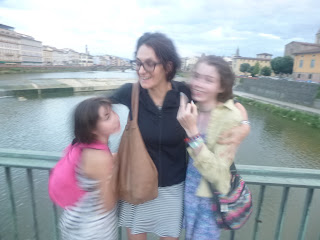




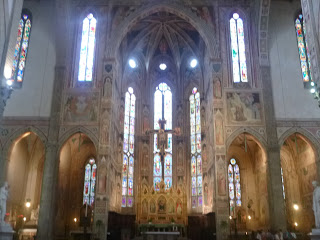
















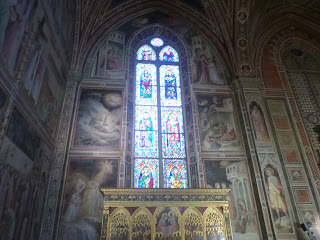































After an hour of perusing, I left.
The art was grand, as usual, but so was the stroll through the medieval streets, past Santa Maria Novella, where the Decameron began, on the way to train station.
Looking around, I remembered all the times I was in this station in the past, making my way to Rome or Milan or wherever else the road might be taking me. By 1130, we caught the train arriving from Venezia on the way to Rome. The sign just said Venezia. SO we jumped on it. Sitting there a man pointed out to us that the train we were on was to Rome not Venezia. Wow, what a day, what a life. We’d have a six hour detour from Florence South to Rome and back to Florence before we’d get to travel Northeast to Venice.
The road teaches us, its ok being lost. Being lost is being home. So, traveling to Rome, instead of Venice, I feel like I am home.
The day before, the tour guide at the Uffizi reminded everyone that the lesson of Italian bureaucracy is when its possible to make life more complicated, it will. Lesson to the wise, look at the sign for the departure track.
In Rome, we got a train back to Firenze. We laughed wondering how long it would have taken us to discovered we were in Rome instead of Venice if the person had not told us. The sky, epic blue, relics in the distance, the train pulled out, back to Venizia by way of Firenze.
“It’s a nice time to read,” noted number one. “I have 70% of my charge.”
So I edited and she read and the day passed into the afternoon on the train, reeling through time.
And finally, some seven hours after we started we arrived at the Venice train station, walked out, the sea air hit out faces, the cool water in front of us, the bright sky above, and a boat in front of us.
And we were blown away.
So we found our apartment, secured the keys, Caroline found us a tiny lovely little place to eat and eat and eat and we were off to business, walking the streets till midnight. It was something like high graduation night. All the students were out singing as they wandered the streets for the celebration, prosecco bottles and aperol sprizz in hand singing, “A Dottore…” So we walked through the winding streets, admiring la bella luna, looking at the sky, the windy streets as this carnival of a city unfolded in front of us. I love seeing the adoration the people have for the “ragazi” out there celebrating, singing, romping about.
We were told this was the weekend of the the Festa del Redentore the third Saturday of July, with fireworks. It is a feast giving thanks for the end of the plague of 1576, that took 50,000 people. I had seen scenes of this celebration in movies and such, but never live. Walking through these streets, one does get a feeling of crossing through time.
Saturday, we all slept in, got some coffee and made our way to St Marks. Light poured through space. One can see why the art of Venice is all about light. Twenty five years ago, I spent a few weekends here, had a home stay in Treviso, and swam all night in the Lido with my friends.
We’d enjoy a Doge Palace walking tour through the place of justice. Our tour guide was pontificating about Lord Byron and the Bridge of Sighs. The bridge from the palace of justice leads to a dead man’s walk over the bridge to meet the executioner.
“It had nothing to do with love,” he explained.
“But all love has some degree of pain,” I followed.
“And despair and heartbreak,” he followed.
“And resentment and heartbreak.”
I looked up the poem Venice by Lord Byron (1788-1824)
(From Childe Harold’s Pilgrimage)
I STOOD in Venice, on the Bridge of Sighs;
A palace and a prison on each hand:
I saw from out the wave her structures rise
As from the stroke of the enchanter’s wand;
A thousand years their cloudy wings expand 5
Around me, and a dying glory smiles
O’er the far times when many a subject land
Looked to the wingéd’s Lion’s marble piles,
Where Venice sate in state, throned on her hundred isles!
She looks a sea Cybele, fresh from ocean, 10
Rising with her tiara of proud towers
At airy distance, with majestic motion,
A ruler of the waters and their powers.
And such she was; her daughters had their dowers
From spoils of nations, and the exhaustless East 15
Poured in her lap all gems in sparkling showers.
In purple was she robed, and of her feast
Monarchs partook, and deemed their dignity increased.
In Venice Tasso’s echoes are no more,
And silent rows the songless gondolier; 20
Her palaces are crumbling to the shore,
And music meets not always now the ear:
Those days are gone, but beauty still is here.
States fall, arts fade, but Nature doth not die,
Nor yet forget how Venice once was dear, 25
The pleasant place of all festivity,
The revel of the earth, the masque of Italy!
But unto us she hath a spell beyond
Her name in story, and her long array
Of mighty shadows, whose dim forms despond 30
Above the Dogeless city’s vanished sway:
Ours is a trophy which will not decay
With the Rialto; Shylock and the Moor,
And Pierre, cannot be swept or worn away,—
The keystones of the arch! though all were o’er, 35
For us repeopled were the solitary shore.
The beings of the mind are not of clay;
Essentially immortal, they create
And multiply in us a brighter ray
And more beloved existence: that which Fate 40
Prohibits to dull life, in this our state
Of mortal bondage, by these spirits supplied,
First exiles, then replaces what we hate;
Watering the heart whose early flowers have died,
And with a fresher growth replenishing the void.
* * * * * 45
The spouseless Adriatic mourns her lord;
And, annual marriage now no more renewed,
The Bucentaur lies rotting unrestored,
Neglected garment of her widowhood!
St. Mark yet sees his lion where he stood 50
Stand, but in mockery of his withered power,
Over the proud place where an emperor sued,
And monarchs gazed and envied in the hour
When Venice was a queen with an unequalled dower.
The Suabian sued, and now the Austrian reigns,— 55
An emperor tramples where an emperor knelt;
Kingdoms are shrunk to provinces, and chains
Clank over sceptred cities; nations melt
From power’s high pinnacle, when they have felt
The sunshine for a while, and downward go 60
Like lauwine loosened from the mountain’s belt:
O for one hour of blind old Dandolo!
The octogenarian chief, Byzantium’s conquering foe.
Before St. Mark still glow his steeds of brass,
Their gilded collars glittering in the sun; 65
But is not Doria’s menace come to pass?
Are they not bridled? Venice, lost and won,
Her thirteen hundred years of freedom done,
Sinks, like a seaweed, into whence she rose!
Better be whelmed beneath the waves, and shun, 70
Even in destruction’s depth, her foreign foes,
From whom submission wrings an infamous repose.
In youth she was all glory,—a new Tyre,—
Her very byword sprung from victory,
The “Planter of the Lion,” which through fire 75
And blood she bore o’er subject earth and sea;
Though making many slaves, herself still free,
And Europe’s bulwark ’gainst the Ottomite:
Witness Troy’s rival, Candia! Vouch it, ye
Immortal waves that saw Lepanto’s fight! 80
For ye are names no time nor tyranny can blight.
* * * * *
I loved her from my boyhood,—she to me
Was as a fairy city of the heart,
Rising like water-columns from the sea,
Of joy the sojourn and of wealth the mart; 85
And Otway, Radcliffe, Schiller, Shakespeare’s art,
Had stamped her image in me, and even so,
Although I found her thus, we did not part,
Perchance even dearer in her day of woe
Than when she was a boast, a marvel, and a show. 90
I can repeople with the past,—and of
The present there is still for eye and thought,
And meditation chastened down, enough;
And more, it may be, than I hoped or sought;
And of the happiest moments which were wrought 95
Within the web of my existence, some
From thee, fair Venice! have their colors caught;
There are some feelings time cannot benumb,
Nor torture shake, or mine would now be cold and dumb.
We spent the next two full days exploring this city, born as Rome declined in 452 CE. A city of merchants with quarters for Germans, Turks, and even a Ghetto for the Jews, now 500 years old.
“All of our city till the 11th century was made of wood,” explained Adriana, our second tour guide. “It’s a 1600 year old city, for 5000 years, its been a marsh. “We were merchants who came here to escape the barbarian invasions, the Huns, the Lonbards. We constructed houses for fishing, to survive instead of stay on the mainland and be killed. Over time, the wood foundation began to petrify under a process of mineralization, on millions of wood pilings that are the foundation of the city. Until 1300 CE, the whole city was built on wood.”
In 828 CE they recovered St Marks’ relics from Alexandria, bringing them here. Byzantine mosaics narrate their passage. The 11th century church includes 16000 feet of gold leaf. There is no other space I have ever seen quite like this Romanesque Church whose interior or covered in gold leaf and frescos. It is a spell binding space.
Adriana shows us a small bridge and a sign with the word “carenpana” and then “courtesan carsina,” a small house where noble men used to go after the opera to meet courtesans. Others went to Ponta de la Tette, where women unbuttoned their shirts and advertised their goods. They were encouraged to be there, to suppress homosexuality.
“Did it work?” I asked Adriana?
“Good question.”
Finishing the tour, we ran away from St Marks to grab a lovely lunch and make our way to the Academia to see some of the Titians and other Venetian Masters. We’d fall in love with the Tinterettos and Bellini’s.
That night we’d celebrate the festa de redentore for the end of the 16th century plague in Venice. We’d explore the Scuola Grade of St Roach and Santa Maria Friare, suThere is so much pain out there. But there is also so much goodness. We’d admire Titian’s passion and departure, love and death, sex and plague. It took artists such as Titian. So many heros, such as Saint Roach, who fought the plague, put himself at risk to take care of others. He was later thought of as a protector against the pestilence which consumed so many lives. Sounds familiar. Oh yea, i guess thats why we're here looking at this art, this sublime.
We’d explore secret Venice, wandering through the Rialto, looking at the fish market, where our tour guide points out a sign, “Rialo no se toca” or “don’t touch the market.”
“They want to move the fish market. We all shop here, and get good prices for things here. We will never shop elsewhere. There is the heart of the city, as important as St Marks,” she declares, walking us through the city where she was born in 1972. “When I was born, there were some 108,000 people here. Now there are 54000. People can’t afford it here anymore.”
Venice is like New York in countless ways. It welcomed a Jewish population here as merchants here. It is an archipelago, that is flooded often. “We are worried about climate change, that this will be the first to disappear,” confessed Adriana. “But we are also worried about the loss of population. But there are lots of things to worry about in this exquisite place. The ships, boats and tourist liners are eroding the foundation which the city is built on.”
Our gondola driver does not seen as concerned. “The water rises up to that green line in the winters. It doesn’t usually go any higher,” he explains, pointing to an algae water line. Barnacles and bugs cling below, with water crashing up to the front doors of people houses where they walk out their boats. He doesn’t seem worried. “It didn’t flood last winter.” Looking at the water running through their alleys connecting three grand canalals connecting with the Adriatic, I wonder if this is the future of cities. I think of Alphabet City during Hurricane Sandy, flooded with water.
My friend Matteo has suggested Venice will be a casualty of climate change. But its hard to know. Its still a city of water and light, built out of resourcefulness, a market of ideas, people, artists, and a sublime. Like New Orleans, it is a city of water, surrounded by rising water, always feeling like its about to recede into the ocean. But this this “dying glory smiles” that Lord Byron so admired, reminds us of a moment of beauty when the sea breeze hits the face, light ripples through the water, and we feel alive.

























































































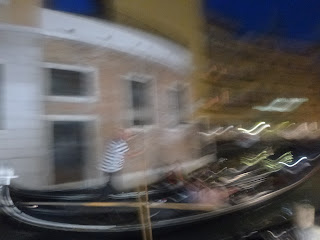
































































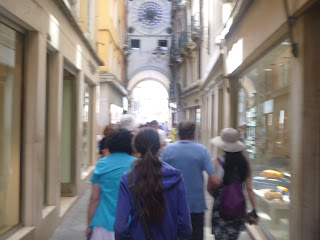



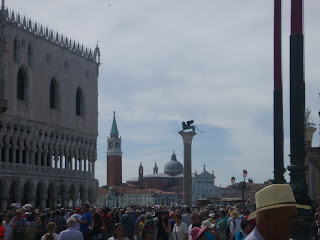






















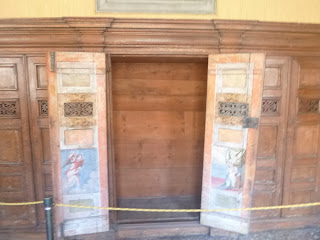




















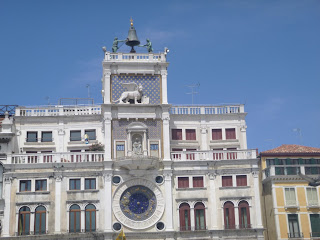






































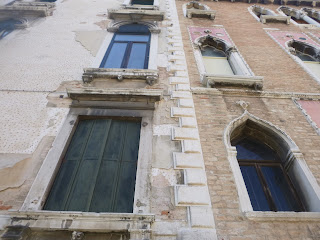






































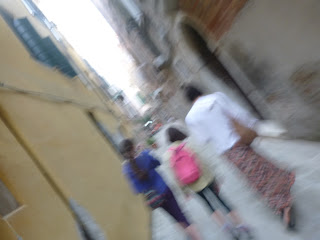

























One of the highlights of the whole weekend, was our trip to the Doge's Palace and the Academia.































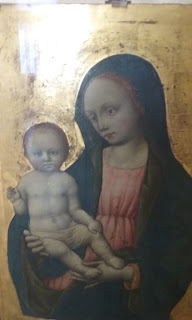






























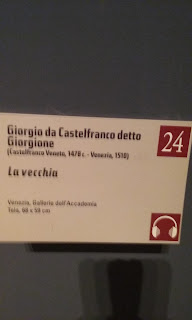































































































No comments:
Post a Comment